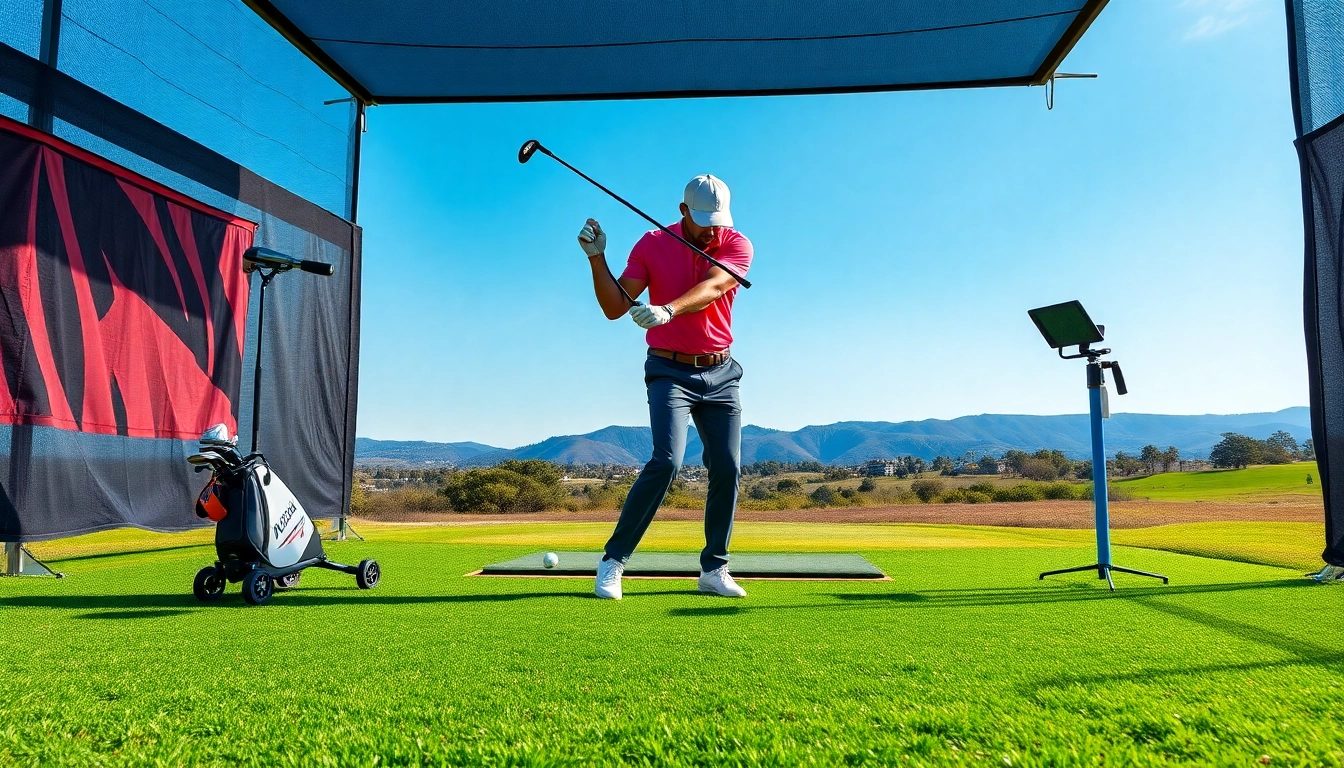
Understanding Golf Training Aids
What Are Golf Training Aids?
Golf training aids encompass a diverse range of tools and devices designed to enhance a golfer’s skills across various aspects of the game. From putting to driving, these aids facilitate targeted practice, helping players improve their techniques, consistency, and overall performance. Essentially, golf training aids can be thought of as supplementary tools utilized to accelerate learning and refinement of golfing skills. Examples include swing analyzers, putting mats, and alignment sticks, each designed with specific purposes tailored to different skills.
The Importance of Practice
As the saying goes, “Practice makes perfect,” and in golf, this adage holds significant weight. Regular practice not only reinforces learned skills but also helps to instill muscle memory, an essential factor in achieving consistency. Moreover, using golf training aids can be particularly beneficial in identifying and correcting flaws in one’s technique. Simply put, practice paired with the right tools creates a structured environment in which golfers can learn and develop their skills more effectively.
Choosing the Right Aid for Your Needs
With numerous options available in the market, it can be challenging to determine which golf training aid will best serve your needs. It’s essential to first evaluate your skill level and specific areas for improvement. For beginners, basic alignment aids may suffice, whereas advanced players may benefit from more sophisticated devices like swing analyzers that provide detailed feedback. Additionally, consider the portability and usability of each aid, ensuring it fits seamlessly into your practice routine.
Key Types of Golf Training Aids
Putting and Chipping Aids
Scoring opportunities often hinge on a player’s performance on the green. This makes putting and chipping aids indispensable tools for golfers wanting to lower their scores. These aids may include putting mats, alignment rods, and training cups. For instance, a well-designed putting mat allows golfers to practice their stroke in a controlled environment, offering visual aids to improve alignment and distance judgment. Meanwhile, chipping aids typically feature targets that help golfers fine-tune their short game as they aim to land the ball in specific zones.
Swing Trainers and Analyzers
Swing trainers and analyzers are pivotal for understanding and improving a golfer’s swing mechanics. These aids can range from simple weighted clubs that help develop strength and tempo to technologically advanced devices that capture swing data and provide feedback via apps. For example, a swing analyzer might track metrics such as swing speed, angle, and path, allowing players to work on specific components of their swing technique. Utilizing these aids can yield data-driven insights that make practice sessions more effective and tailored to individual needs.
Alignment and Distance Tools
Proper alignment and distance control are keys to a successful golf game. Alignment aids, such as alignment sticks, can help golfers train their body to consistently set up in the same position. For distance control, devices like GPS rangefinders are invaluable, providing accurate measurements to the green from any location on the course. With a strong understanding of your alignment and accurate distance references, your performance can significantly improve, enabling a higher level of strategy on the golf course.
How to Incorporate Golf Training Aids into Your Routine
Setting Training Goals
The first step in effectively using golf training aids is to set clear, attainable training goals. Determine which aspects of your game require the most attention, be it driving accuracy, putt consistency, or short game skills. Establish measurable objectives like reducing the number of putts per round or improving swing speed by a specific percentage. By articulating specific goals, golfers can align their practice sessions with the proper training aids to ensure a focused and purposeful approach.
Creating a Consistent Practice Schedule
Consistency in practice cannot be overstated. Developing a regular schedule—be it daily, weekly, or bi-weekly—will ensure that practice becomes a habit rather than a sporadic endeavor. Integrate your training aids into each session in a structured manner; for example, spending the first 30 minutes focused on putting aids, followed by a further 30 minutes using swing trainers. This approach solidifies the habit of using training aids and allows for progressive improvement over time.
Tracking Your Progress
To gauge the effectiveness of your practice, tracking your progress is vital. Keeping a golf practice journal can help you document your experiences with different training aids, noting what worked well and what didn’t. Document metrics relevant to your training goals, such as putts per round or changes in swing speed. Over time, this data can reveal trends and help refine your practice strategies, ensuring that you continuously evolve as a golfer.
Common Challenges with Golf Training Aids
Over-Reliance on Equipment
One of the most significant challenges golfers face is becoming overly reliant on training aids. While these tools can enhance learning, it’s essential to strike a balance between using aids and relying on core skills. Golfers may find themselves dependent on equipment for practice, leading to difficulties when playing without them. To combat this, limit use of aids during on-course play and focus on applying skills learned in practice.
Understanding Your Body Mechanics
Golf is a complex sport that requires a deep understanding of body mechanics. Some training aids may fail to address specific physical limitations, potentially reinforcing poor habits rather than correcting them. Players should be aware of their individual body mechanics and should consult with a golf professional when attempting to interpret feedback from a training aid. Tailoring aid usage to your physical capabilities can ensure that you are training effectively.
Adapting to Different Conditions
Golfers often face varying conditions—grass types, slopes, wind, and course layouts—that can affect performance. Training aids designed for perfect conditions may not translate seamlessly to real-world scenarios. To remedy this, golfers should incorporate drills that simulate various playing conditions with their training aids. This adaptive practice can enhance confidence and performance when faced with the unpredictable elements of actual play.
Innovations in Golf Training Aids
Smart Technology for Improved Performance
The advent of smart technology has dramatically influenced golf training aids, introducing advanced capabilities and features. Devices like digital swing analyzers and smart golf balls can provide real-time feedback through mobile applications, allowing golfers to make immediate adjustments. These innovations empower players to hone their skills with the highest precision while learning in an engaging, interactive manner.
Accessibility of Training Equipment
As golf continues to grow in popularity, the accessibility of training equipment has improved. Many companies are developing affordable, high-quality training aids that make effective practice more attainable for golfers at all levels. Whether through budget-friendly options or rental programs, aspiring players now have the resources needed to develop their skills without breaking the bank.
Future Trends in Golf Training Aids
Looking ahead, the future of golf training aids is likely to be shaped by continued integration of technology, with an emphasis on virtual and augmented reality experiences. Such technologies have the potential to create immersive practice sessions that enhance learning through simulations that accurately mimic real-world scenarios. As innovations unfold, golfers can expect increasingly sophisticated training aids that offer deeper insights, more targeted training, and ultimately, improved game performance.





